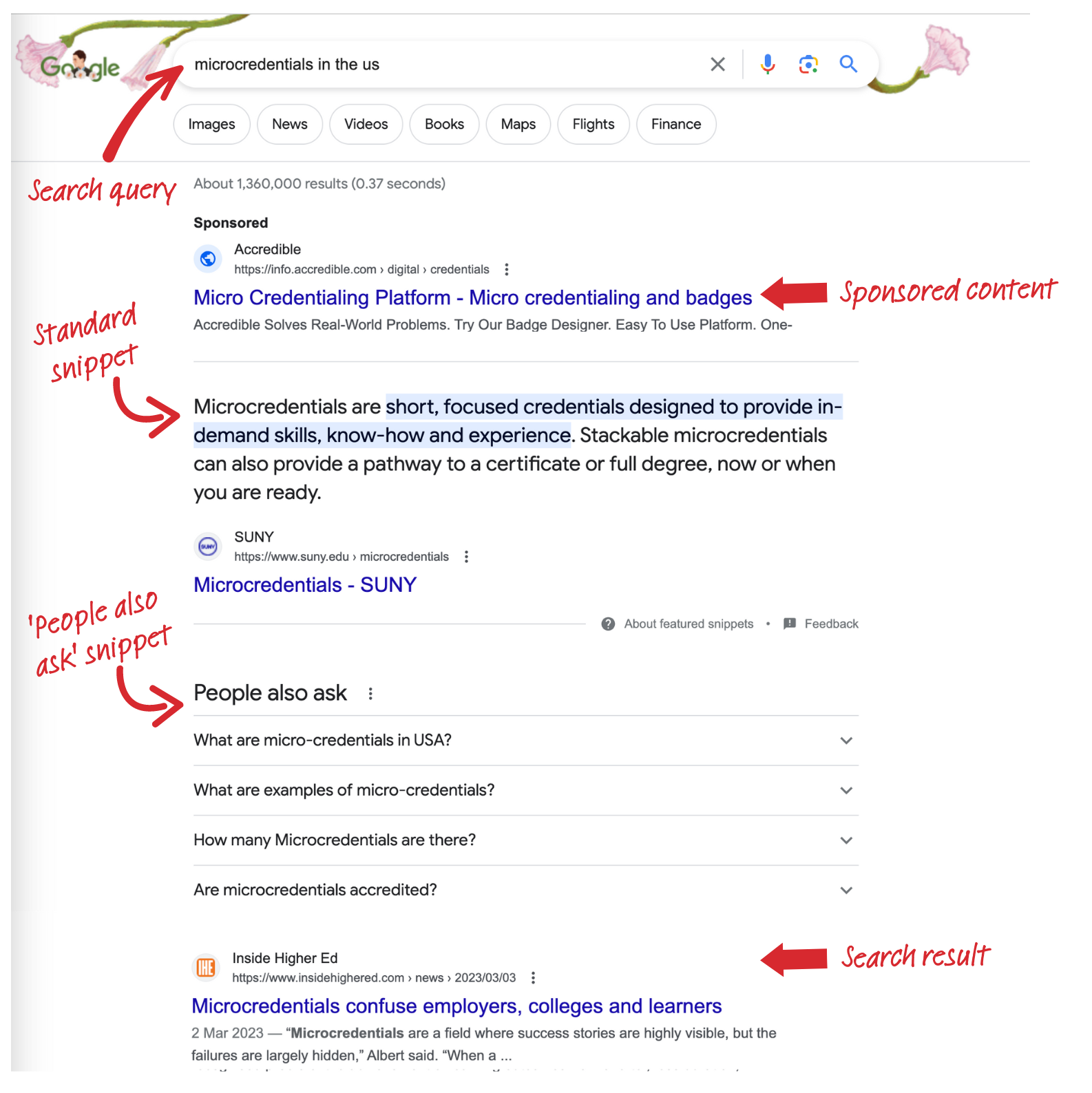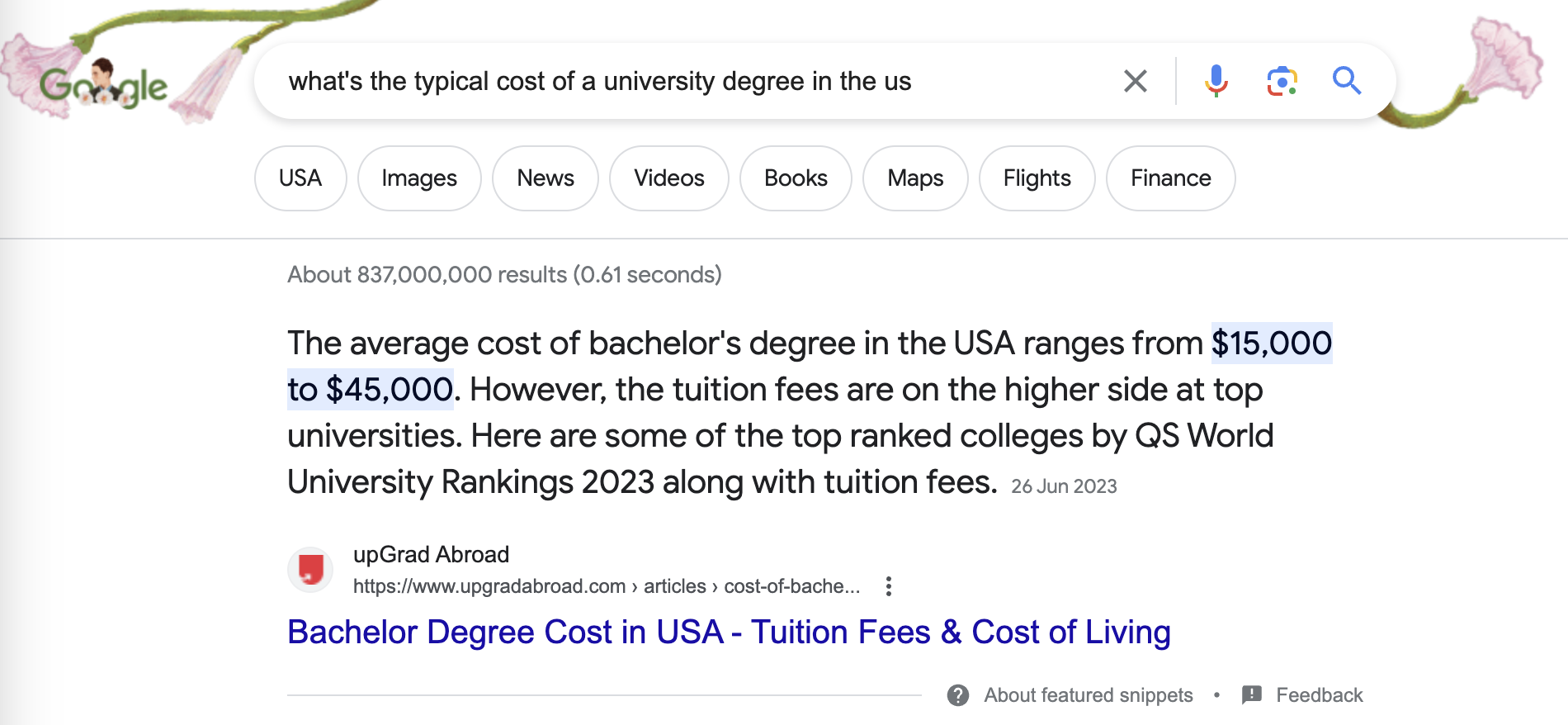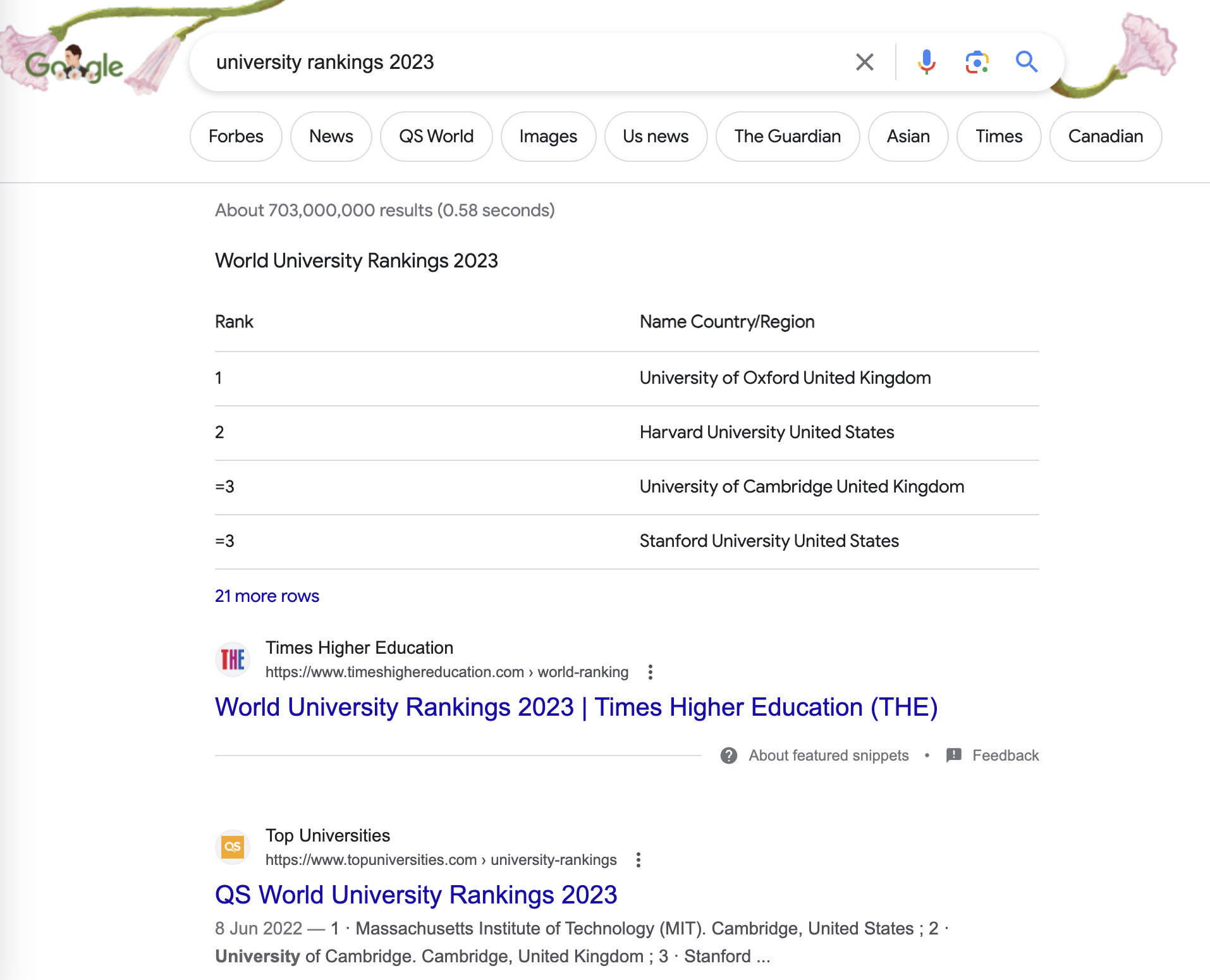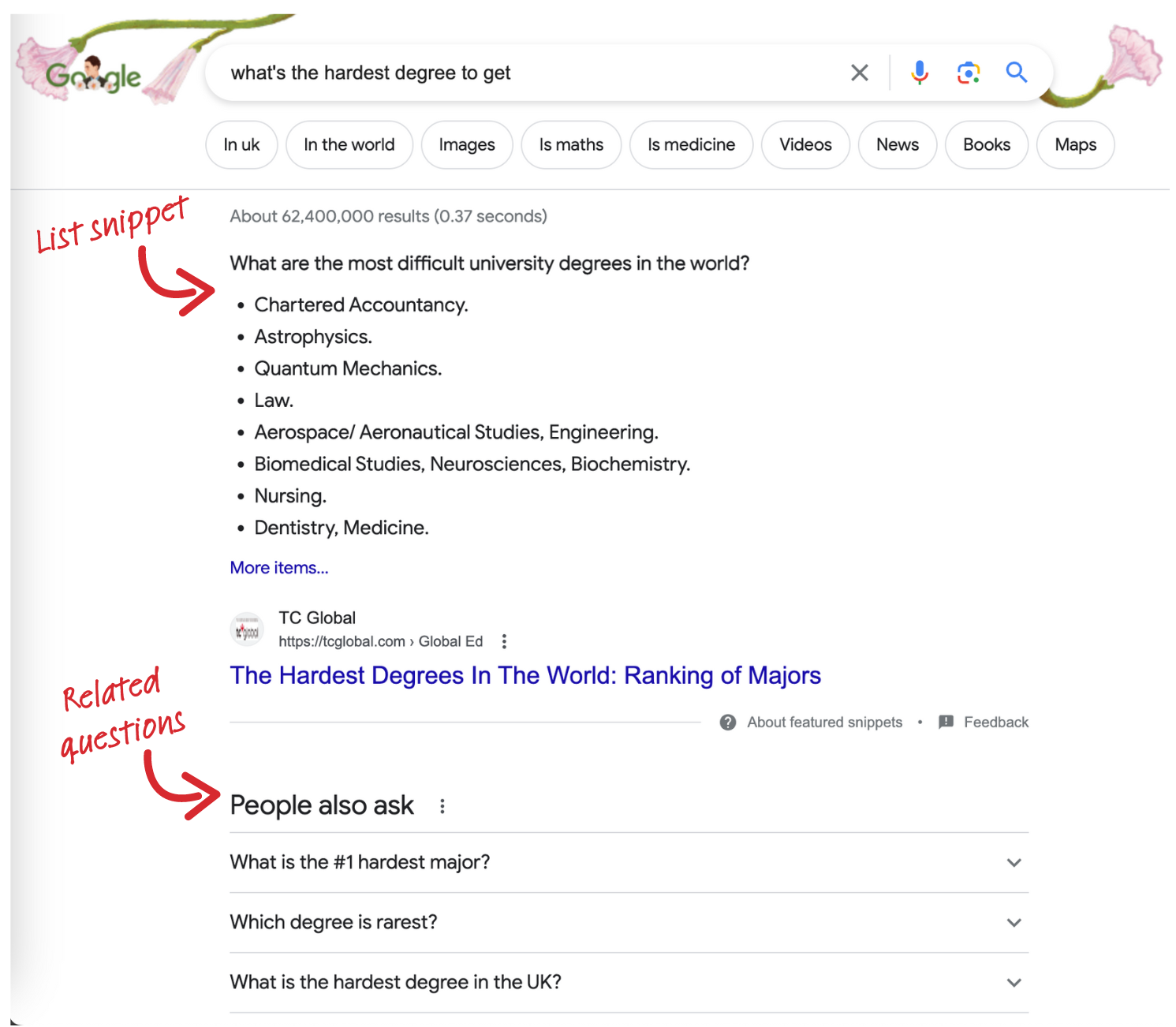From Featured and rich snippets to "People also ask" and "From sources across the web" snippets, we love how Google Snippets helps provide useful content that helps increase conversions.
This week, in Part I of this article diving into how universities and colleges can use Google Snippets to showcase your content, engage with prospective students and other audiences, and boost traffic to your website.
In Part II next week, we'll explore strategies that higher education marketers and developers can use to maximize their content and secure a coveted spot in Google Snippets.
What are Google Snippets?
Google Snippets are brief, direct answers to a search query in Google that appear at the very top of the search bar results, right under Sponsored content.
Google Snippets typically include a summary of the answer, along with the source's title, URL, and, sometimes, an image.
These Snippet search results provide relevant and quick information and are especially useful for mobile searches, and the content is chosen by Google's automated systems.

For universities and colleges, having your content appear as a Google Snippet can significantly increase your website's visibility, credibility, and traffic.
Snippets are often referred to as 'position zero' because they appear above the traditional organic search result and take up a lot of prime real estate above the fold.
As such, they're highly prized—and you can claim this prime spot.
To do this, focus on improving your content to rank high in organic SEO search results (keyword optimization, high-quality backlink building, responsive website design, etc.).
The closer your university website is to the top of search results, the more likely your content will be considered for a Google Snippet.
There are three main types of Google Snippets, and below is a quick breakdown of each. (In Part II, we'll go deeper into the specific Featured Snippet options.)
1. Standard and Rich Snippets
Standard snippets are usually just basic snippets that include a title, the meta description, and a URL.
Rich Snippets will include images and additional information like location, rating, reviews, etc., and usually produce better click-through-rate results.

A typical Standard Snippet
2. Featured Snippets
Some search terms need only a quick answer, and this is what Featured Snippets (chosen by Google) do, and this is where the work comes in.
Featured Snippets can be in the form of a paragraph, a list, a table, a video, or more.

A search term for "University rankings 2023" yields a Featured Snippet table from the Times Higher Education website. Note the "21 more rows" at the bottom of the table that a user can click to expand without having to visit the website
3. People Also Ask Snippets
People Also Ask Snippets are questions related to the initial search query that can be expanded to show the answer.

'People also ask' Snippets appear in this example, after a Featured snippet list and before the actual search results. They list frequently asked questions related to the initial search query.
Examples of higher education content for Google Snippets
By structuring content in response to top searched-for questions, you can create informative and easily digestible Google Snippets that directly answer the questions and needs/concerns of prospective students and their families even before they hit your website.
For example, you could create content to answer questions such as:
- "What majors does [your university] offer?"
- "How much does tuition at [your university] cost?"
- "What's the acceptance rate at [your university]"
- "What's campus life like at [your university]?"
- "How do I apply for housing at [your university]?"
- "What career and internship prospects are there with a degree from [your university]?
Why structure content for Snippets?
For universities, structuring content to appear as Google Snippets offers several significant benefits:
- Increased visibility: Google Snippets are positioned above regular search results, making them highly visible and likely to attract more clicks. By appearing in a Snippet, your university or college can increase your online presence and brand exposure.
- Credibility and authority: Snippets often come from reputable and authoritative sources. When your university's content appears as a Google Snippet, it lends credibility and establishes your institution as an expert in its field.
- Mobile-friendly results: As featured snippets are prominent on mobile devices, having your content featured as a Snippet can lead to higher engagement anda better experience for on mobile devices.
- Higher Click-Through Rates (CTR) and enhanced student engagement: Snippets provide immediate answers to students' questions, increasing the likelihood of engagement and click-through to your site, especially if the information is useful.
- Improved student user experience: Snippets offer fast and relevant information, in an age when Gen Z especially needs quick answers. By structuring your content for Google Snippets, you can provide a good user experience to students as well as a good first impression.
- Competitive advantage: Structured content can help you outperform competitors by claiming the prized snippet spot, which can set you apart and drive more organic traffic to your site.
- Direct communication: Snippets allow you to directly address questions and concerns prospective students may have, making it easier for them to get the information they need about your university or college without the need for users to navigate through multiple web pages.
- Voice Search Optimization: Structured content is also crucial for voice search optimization. Voice assistants often pull information from featured snippets when responding to voice queries, making structured content more likely to be selected.
To harness these benefits, though, your content has to be structured, brief, and relevant to the actual questions that prospective students (and other audiences) have.
Check out for Part II of this topic to see how you can structure your university or college content for Google Snippets and earn that valuable spot!
Has your university or college structured content for Featured Snippets? How did you fare?
We'd love to hear about it in the comments below or on our social media channels.
 |
 |
 |
|---|

:format()//media/Mastering-Google-Snippets-for-higher-education-websites-RQ.png)